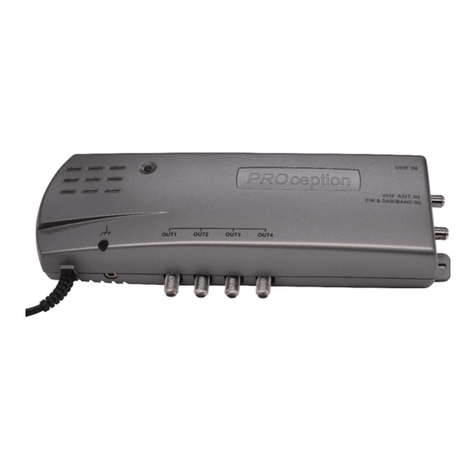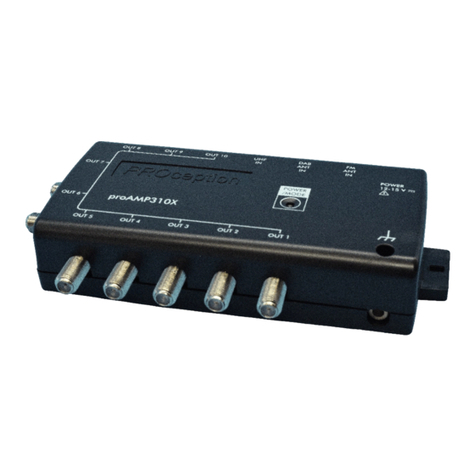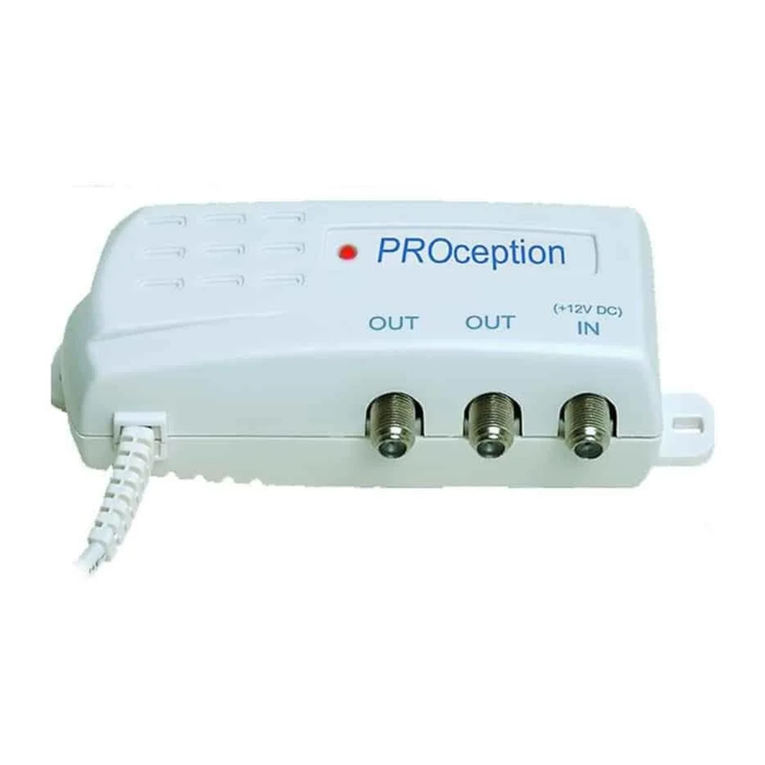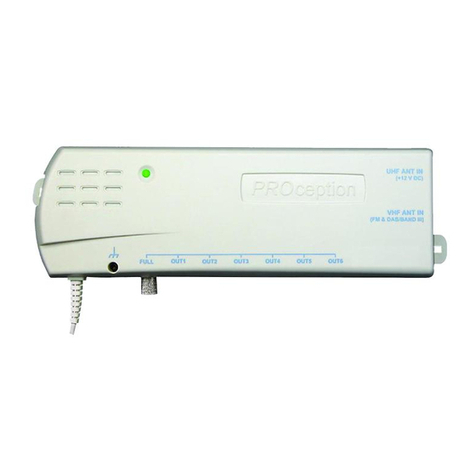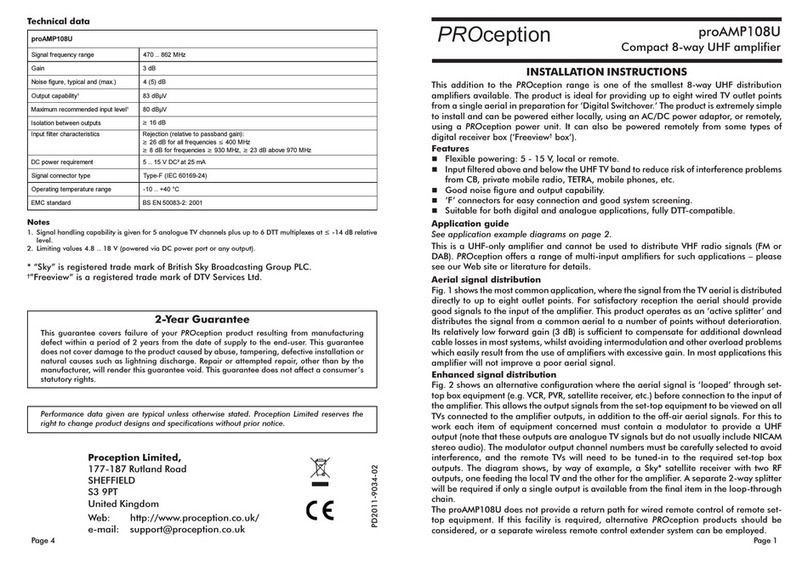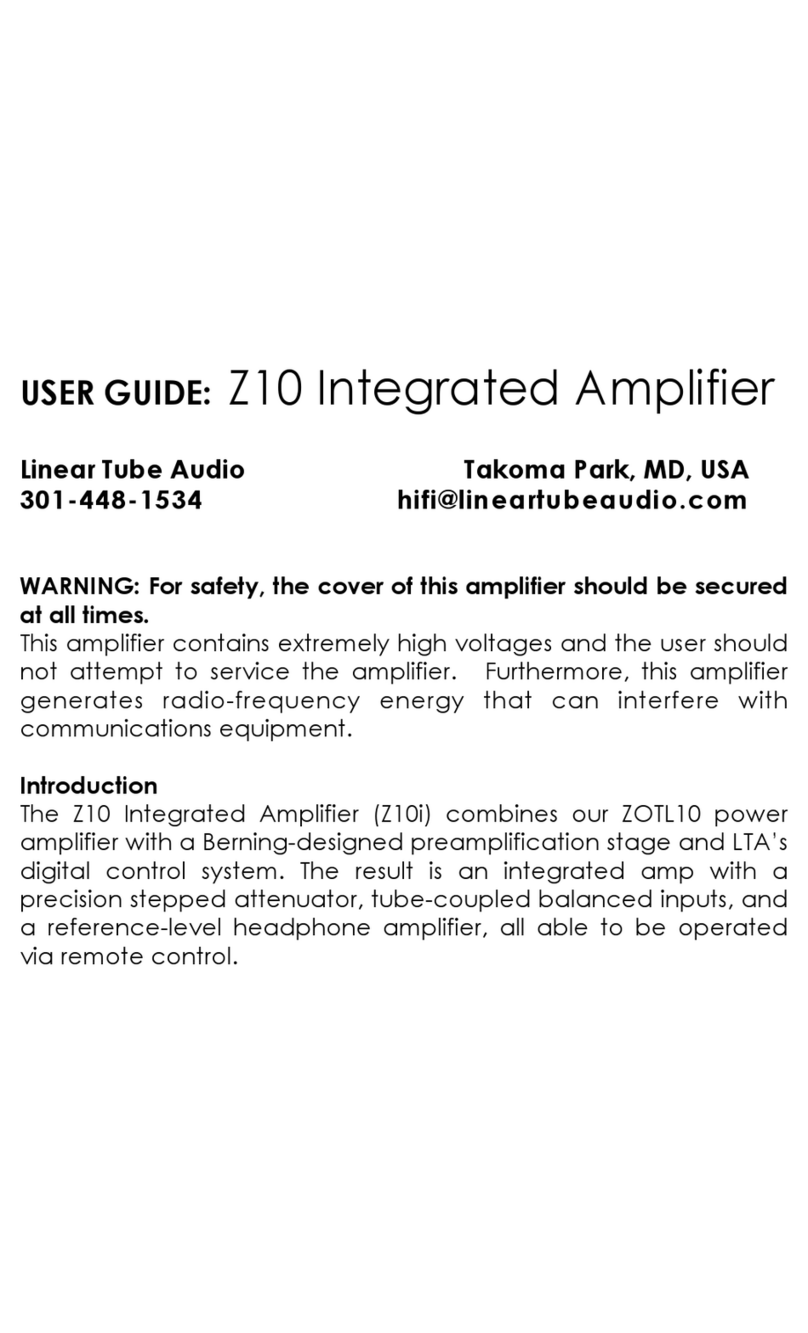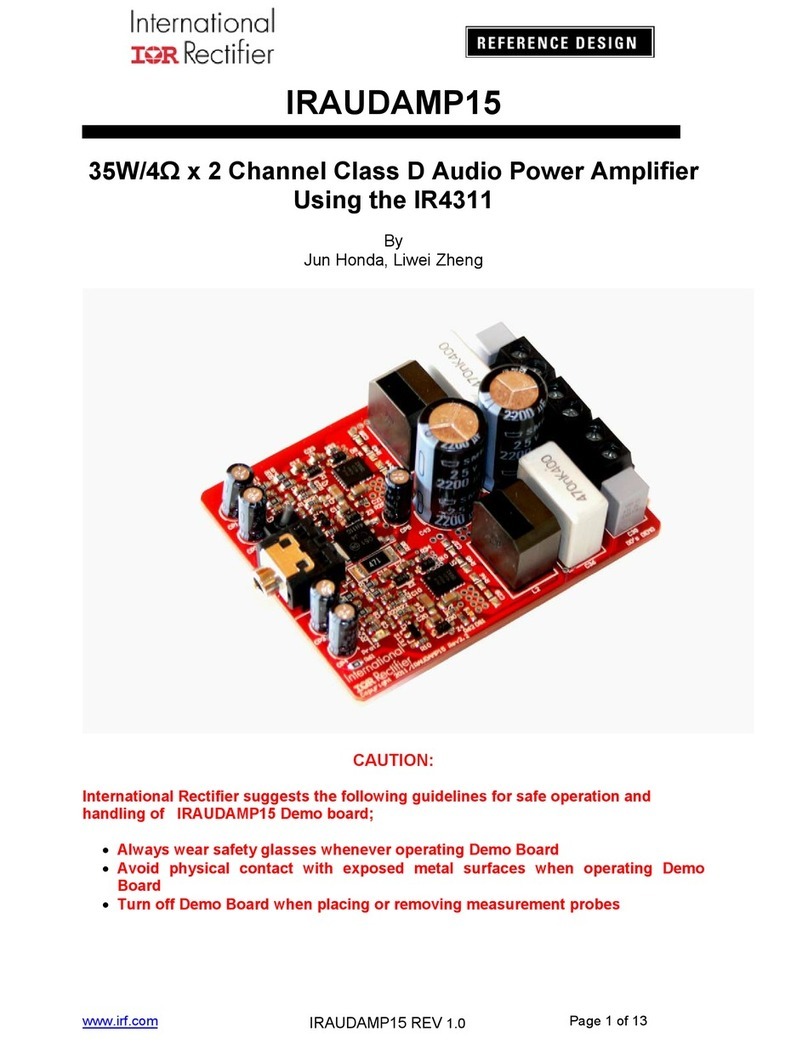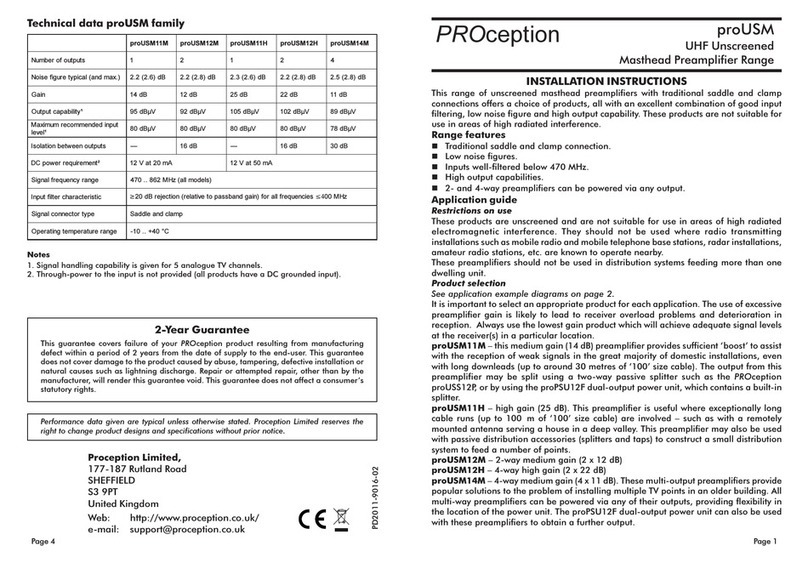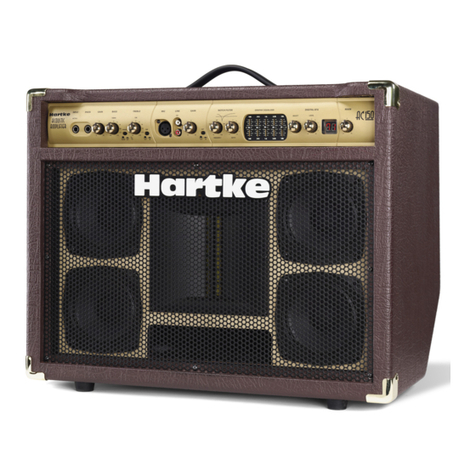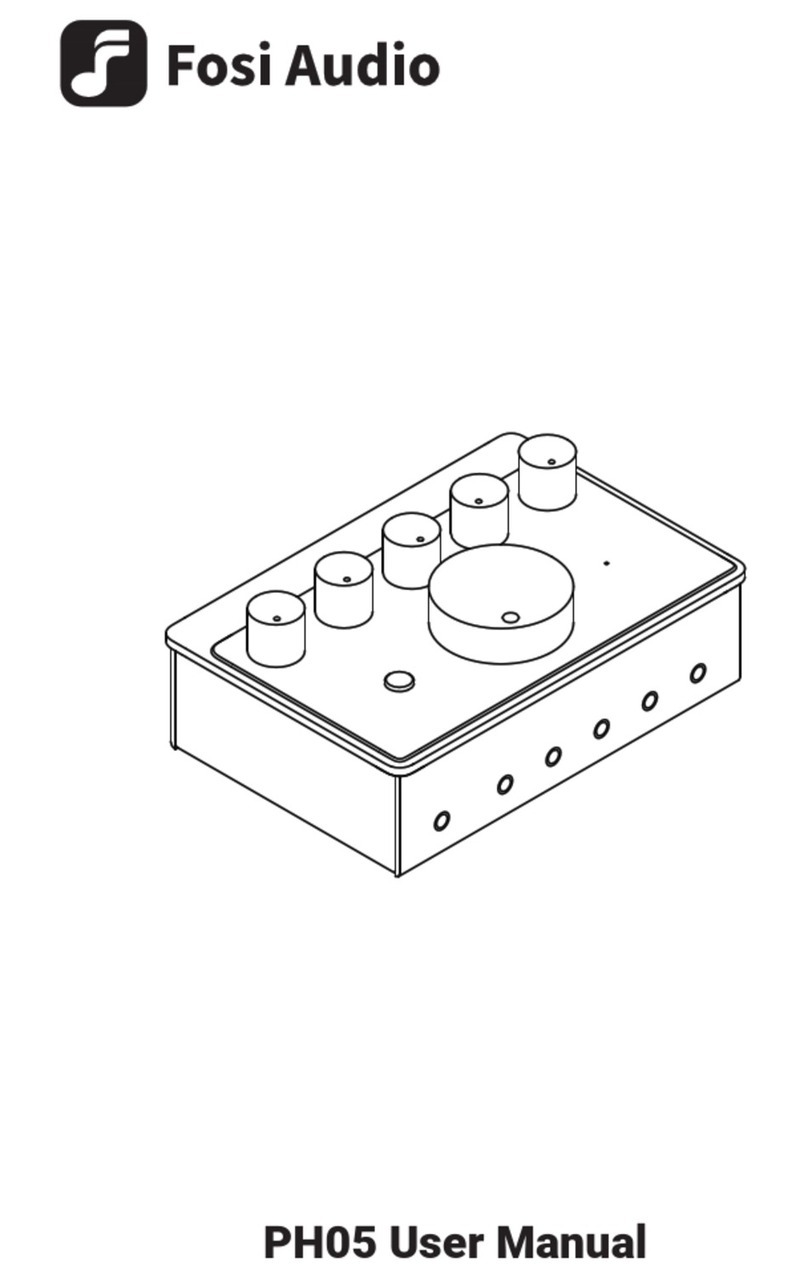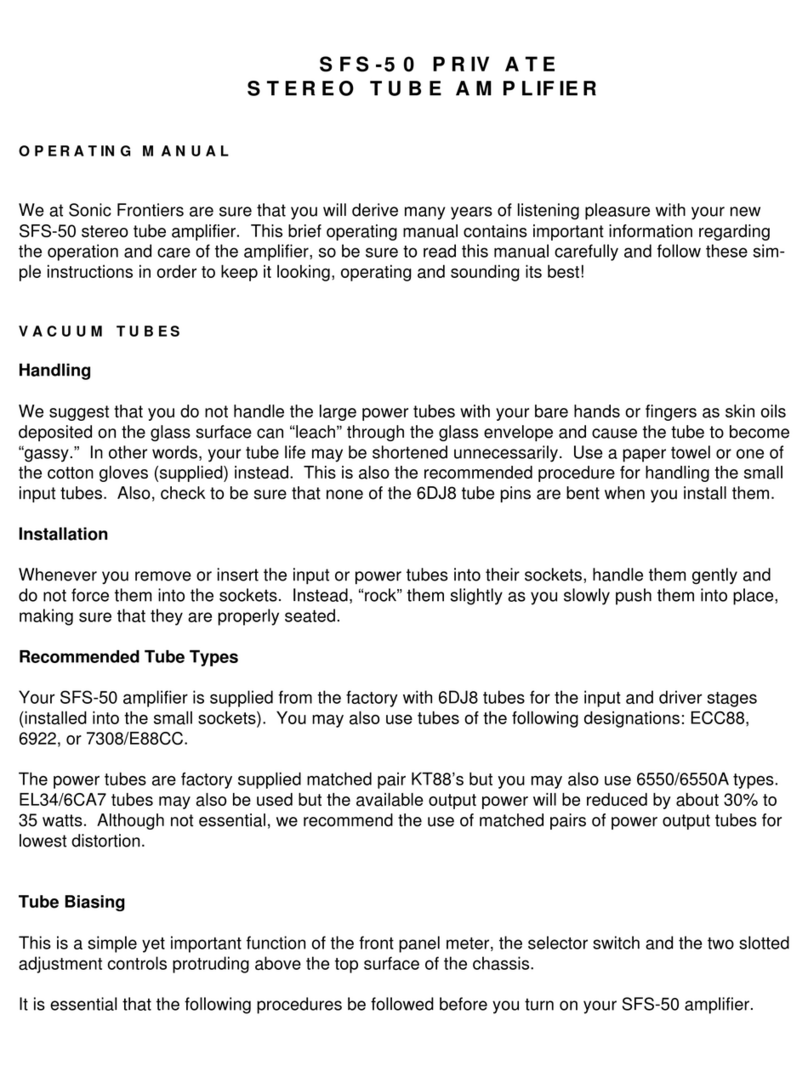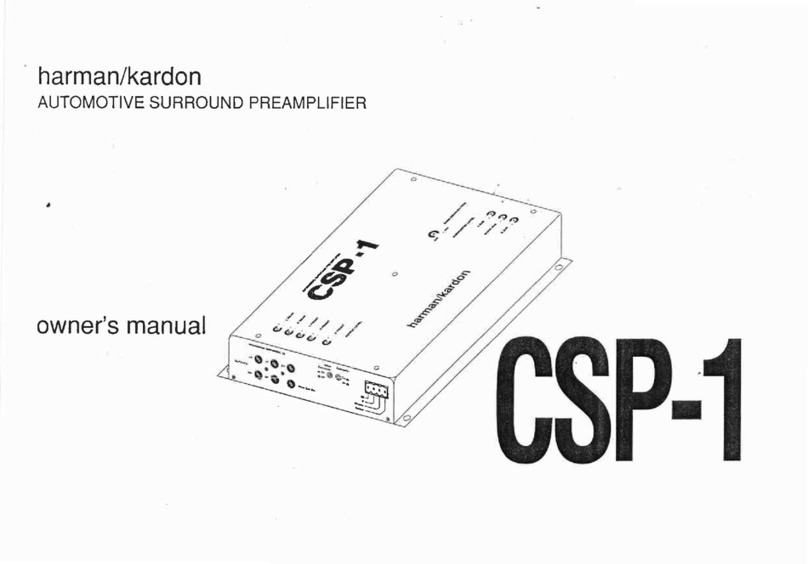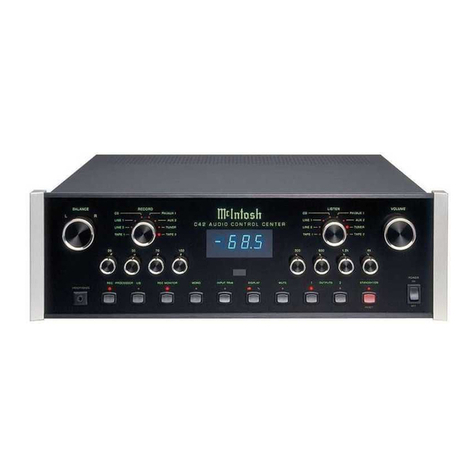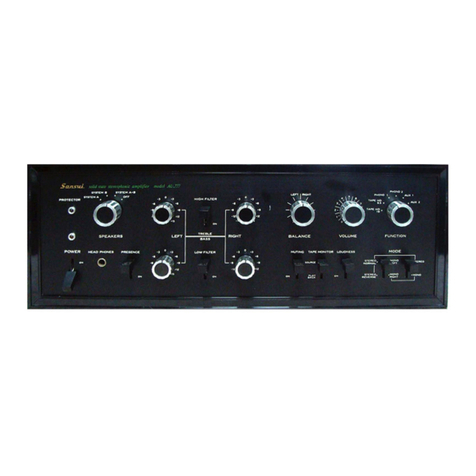
Page 4 Page 5
Cables and signal connections
To preserve RF screening integrity the signal connections to the unit should be
made using good quality coaxial cable and connectors. This is particularly important
with digital terrestrial TV (DTT to minimise the ingress of impulsive electrical
interference from electrical appliances. The use of CAI benchmarked cable is
strongly recommended.All signal connections are made with Type-F connectors.
The use of good quality crimp or compression connectors, used in accordance
with the manufacturers instructions will give the best results. The importance of
achieving sound braid connections cannot be over-stressed. Completed connections
should always be tightened with a spanner leaving them finger-tight can
sometimes lead to poor connections and attenuation of the signal.
Unused inputs
If either of the VHF inputs and/or the AUX UHF input are not to be used the
corresponding gain controls should be turned to minimum. Provided that this is
observed there is no need to fit terminating resistors.
Mains supply connection and safety notes
The amplifier is supplied with a fitted mains plug and may be plugged directly into
a 13A (BS1363 socket outlet. If socket outlets of a different type are in use,
please refer to the safety instructions on page 7. Alternatively the plug may be cut
off and the amplifier wired into a readily accessible fused connection unit, fitted
with an approved 3 A fuse to BS1362. This method of connection is recommended
for permanent distribution system applications, since it reduces the risk of tampering
and accidental disconnection. If the amplifier is not connected to the mains using
the fused plug supplied, or a fused connection unit, it must be protected by means
of a fuse or MCB at the final distribution board of rating not exceeding 6A.
A readily accessible isolating switch should be provided to allow the unit to be
disconnected from the supply.
Any new fixed wiring installed to supply power to this amplifier should comply
with BS7671 (IEE wiring regulations and, where relevant, Part P of the UK building
regulations. The amplifier is of Class 2 construction and does not require a protective
earth connection. This does not obviate the need to provide a circuit protective
(earth conductor in the supply wiring, as required by BS7671.
System equipotential bonding
All signal distribution systems should comply with the safety requirements of
BSEN60728-11. This effectively requires earthed equipotential bonding of every
system. For further guidance see the CAI code of practice COP03.
The amplifier is provided with a bonding terminal. A bonding conductor of 4mm²
should be provided, connected to the main earth terminal of the electrical
installation which supplies the unit. Bonding may be effected using PROception
proBAR5 or proBAR8 equipotential bonding bars, allowing the amplifier to be
removed for maintenance without disturbing the bonding of the signal cables.
Notes
1. This table is given for general guidance only and assumes a passive distribution network with a nominal loss
between the amplifier output and each system outlet of around 30dB in Band rising to 40dB in BandV
(UHF Group C/D). Different levels may need to be specified if the characteristics of the passive network differ
widely from this. UK transmission parameters are assumed and care should be taken when using the amplifier in
territories with differing transmission standards.
2. Acceptable levels at system outlets are in accordance with the recommendations of DTG R-Book 5.
3. Before DSO the system should be set-up on the analogue TV channels. The pre-DSO digital levels shown assume
that the digital muxes are received at -14dB relative to analogue. n some cases the digital levels will be lower
and care should be taken to ensure that they are within the acceptable range at all system outlets.
4. The post-DSO levels shown are based on a figure of -7dB relative to the former analogue signals. This applies
to the public service (PSB) muxes from most main transmitter sites, so little or no adjustment should be necessary
at DSO in many cases. Where adjustment is needed, or when setting up a new system after DSO, be sure to use
the highest level multiplexes for setting-up. At many sites the commercial (COM) muxes will be around 3dB
lower than the PSB muxes.
5. f a single local analogue TV channel is present on an otherwise all-digital system after DSO (via the AUX UHF
input) it is recommended to set its launch level to be about the same the PSB digital muxes.
dnabdnaepytlangiS
1
tupnielbatpeccA
egnarlevel
dednemmoceR
slevelhcnual
tasleveL
tnioprotinom
steltuometsystasleveL
egnarelbatpe
ccAlanimoN
2
oidarFHV
MFIIdnaBVµBd87..85VµBd09 Vµd06 VµBd06VµBd47..45
BADIIIdnaBVµBd17..15VµBd38 Vµd35 VµBd05VµBd07..03
OSDer
ofebVTFHU
3
ApuorGVTeugoanAVµBd19..17VµBd601 Vµd67 VµBd07VµBd08..06
BpuorGVTeugoanAVµBd19..17VµBd801 Vµd87 VµBd07VµBd0
8..06
D/CpuorGVTeugoanAVµBd19..17VµBd011 Vµd08 VµBd07VµBd08..06
ApuorGVTatigiDVµBd77..75VµBd29 Vµd26 VµBd6
5VµBd56..54
BpuorGVTatigiDVµBd77..75VµBd49 Vµd46 VµBd65VµBd56..54
D/CpuorGVTatigiDVµBd77..75VµBd69 Vµd66 Vµ
Bd65VµBd56..54
OSDretfaVTFHU
5,4
ApuorGVTatigiDVµBd48..46VµBd99 Vµd96 VµBd36VµBd57..54
BpuorGVTatigiDVµBd48..46VµBd101 Vµd17 VµBd36VµBd57..
54
D/CpuorGVTatigiDVµBd48..46VµBd301 Vµd37 VµBd36VµBd57..54
Installation notes
Location and fixing
Choose a suitable central location to fix the amplifier. The location must be dry
and not subject to prolonged ambient temperature conditions of less than -10°C
of more than + 40°C. Fix the amplifier to a sound vertical surface such as a wall
or equipment mounting board. Ventilation gaps of at least 50mm should be left
around the front and sides of the unit. More clearance will be required above and
below the unit to allow access for the signal cables.
When installing the unit in a roof space or similar building void ensure that
it will not come into contact with thermal insulation material
Signal levels
To achieve good performance it is essential that that every system is set-up by a
competent person using an accurate signal level meter or spectrum analyser
connected to the amplifiers monitor point. The following table gives general
guidance: it shows recommended launch levels and the corresponding input,
monitor point and system outlet levels for a typical system, both before and after
the UK digital switch-over (DSO . See the table footnotes for more detail.




